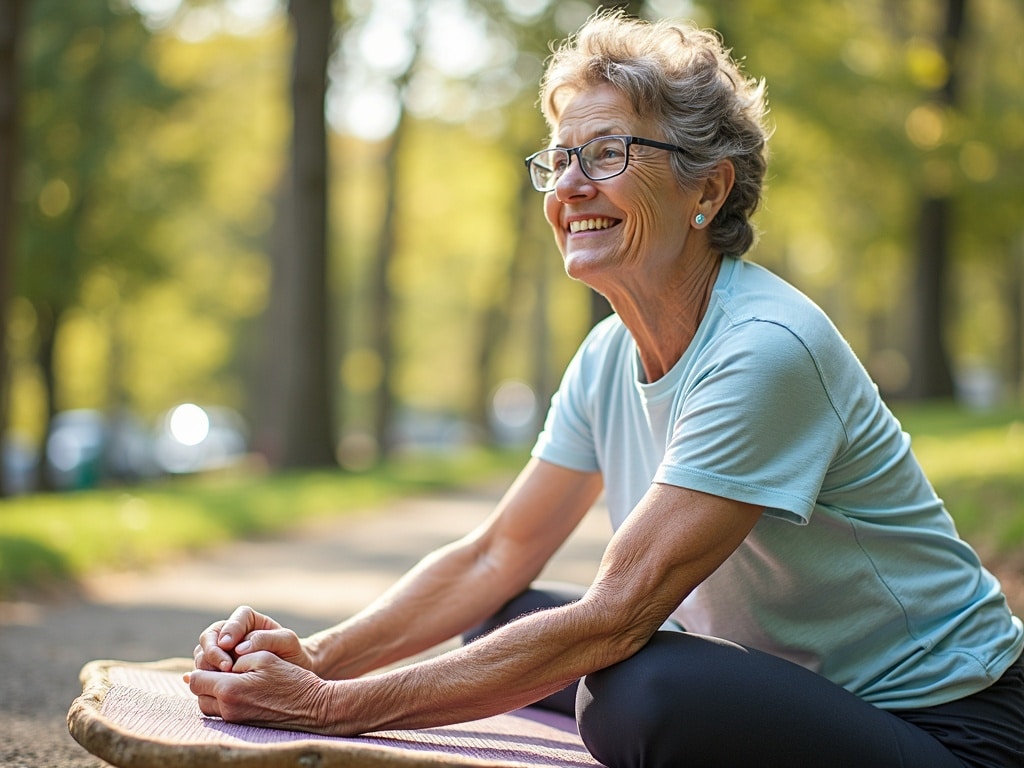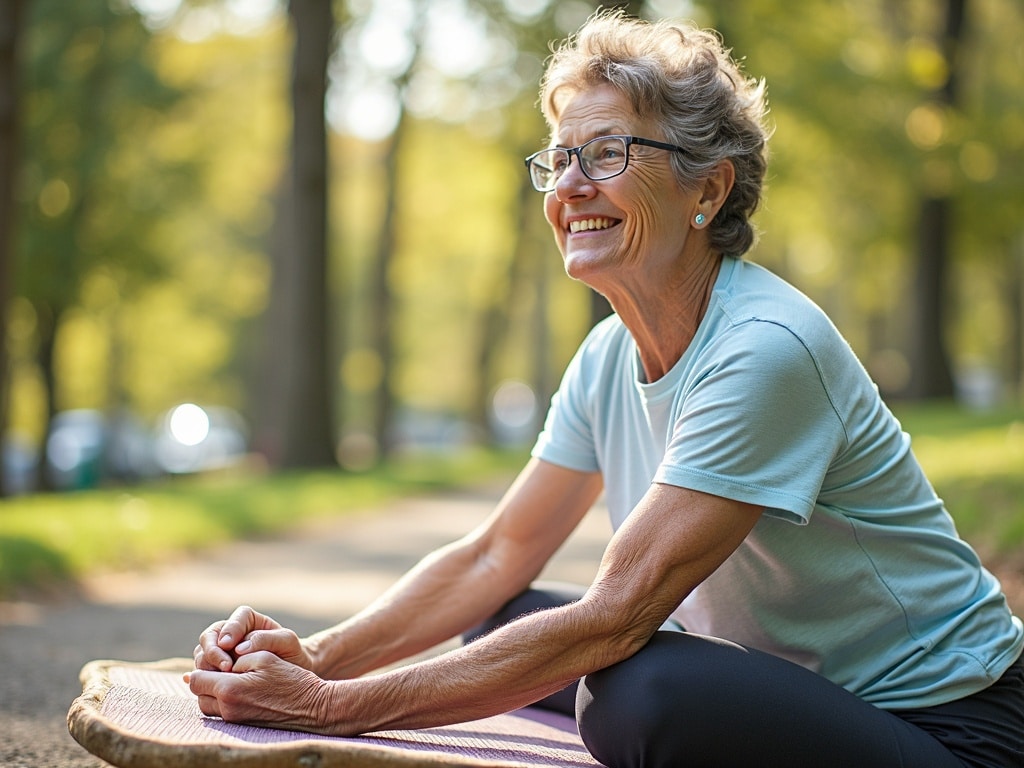Senior Exercise Secrets: Stay Active After 45 (Without the Aches!)
Remember that feeling of boundless energy you had in your youth? While chasing that exact feeling might be a fool's errand, recapturing a significant portion of your vitality is absolutely within reach, even after 45. The secret? Senior exercise. This isn't about grueling workouts or pushing your body to its absolute limits. It's about smart, consistent movement that keeps you feeling young, strong, and vibrant. In this comprehensive guide, we'll unlock the secrets to safe and effective senior exercise, helping you stay active, independent, and pain-free for years to come.
The Fountain of Youth: Key Benefits of Senior Exercise
Forget expensive creams and dubious supplements. The true fountain of youth is movement. The benefits of senior exercise extend far beyond just physical fitness. Here's a glimpse of what awaits you:
- Improved Physical Health: Strengthen your heart, lower blood pressure, improve cholesterol levels, and reduce the risk of chronic diseases like diabetes and osteoporosis. Think of exercise as preventative medicine, keeping you healthy and out of the doctor's office.
- Increased Mobility and Balance: Maintain your independence by improving your balance and coordination, reducing the risk of falls and injuries. No more worrying about navigating stairs or carrying groceries.
- Enhanced Cognitive Function: Boost your brainpower! Exercise increases blood flow to the brain, improving memory, focus, and cognitive function. Keep your mind sharp and engaged.
- Elevated Mood and Reduced Stress: Exercise releases endorphins, natural mood boosters that combat stress, anxiety, and depression. Feel happier, calmer, and more resilient.
- Weight Management: Maintain a healthy weight by burning calories and building muscle mass. Shed excess pounds and improve your overall body composition.
- Better Sleep: Enjoy deeper, more restful sleep. Exercise can regulate your sleep cycle, helping you fall asleep faster and stay asleep longer. Say goodbye to restless nights.
Move Your Body: The Best Types of Senior Exercise
Senior exercise isn't about high-impact aerobics. It's about finding activities you enjoy and that suit your physical capabilities. Here are some excellent options to consider:
- Walking: The simplest and most accessible exercise. Walk at a brisk pace for at least 30 minutes most days of the week. Explore your neighborhood, visit a park, or join a walking group.
- Water Aerobics: Gentle on the joints and provides excellent resistance. Water aerobics is a fun and effective way to improve cardiovascular health and strength.
- Chair Yoga: A modified form of yoga that can be done while seated, making it accessible to individuals with limited mobility. Improves flexibility, balance, and strength.
- Tai Chi: A gentle, flowing exercise that improves balance, coordination, and flexibility. Tai Chi is also known for its stress-reducing benefits.
- Strength Training: Use light weights or resistance bands to build muscle mass and strength. Strong muscles support your joints, improve balance, and make everyday tasks easier.
- Pilates: Focuses on core strength, flexibility, and posture. Pilates can help improve balance, reduce back pain, and enhance overall body awareness.
Ready to Start? How Seniors Can Kickstart an Exercise Routine
Starting an exercise routine can seem daunting, but it doesn't have to be. Here's a step-by-step guide to get you moving:
- Consult Your Doctor: Before starting any new exercise program, consult your doctor to ensure it's safe for you, especially if you have any underlying health conditions.
- Start Slow and Gradually Increase Intensity: Don't try to do too much too soon. Begin with short, low-intensity workouts and gradually increase the duration and intensity as you get stronger.
- Listen to Your Body: Pay attention to your body's signals. If you feel pain, stop and rest. Don't push yourself too hard, especially in the beginning.
- Find an Activity You Enjoy: Choose activities you find fun and engaging. You're more likely to stick with an exercise routine if you enjoy it.
- Set Realistic Goals: Start with small, achievable goals. For example, aim to walk for 15 minutes three times a week. As you progress, you can gradually increase your goals.
- Find a Workout Buddy: Exercising with a friend or family member can help you stay motivated and accountable.
Avoid the Pitfalls: Common Senior Exercise Mistakes
Even with the best intentions, it's easy to make mistakes when starting a senior exercise program. Here are some common pitfalls to avoid:
Discover Proven Strategies to Manage Chronic Pain and Enhance Your Daily Comfort and Activity Levels
- Skipping the Warm-Up and Cool-Down: Warming up prepares your body for exercise, while cooling down helps prevent muscle soreness and stiffness.
- Overdoing It: Pushing yourself too hard can lead to injuries and burnout. Listen to your body and gradually increase the intensity of your workouts.
- Using Improper Form: Using improper form can increase your risk of injury. If you're unsure about proper form, consult a qualified fitness professional.
- Ignoring Pain: Don't ignore pain. If you experience pain during exercise, stop and rest. Consult your doctor if the pain persists.
- Not Staying Hydrated: Drink plenty of water before, during, and after exercise to stay hydrated.
- Being Inconsistent: Consistency is key. Aim to exercise regularly, even if it's just for a short period of time.
Fuel Your Body: How Diet Complements Senior Exercise
Exercise is only one piece of the puzzle. A healthy diet is essential for fueling your body and maximizing the benefits of exercise. Here are some dietary tips for seniors:
- Eat a Balanced Diet: Focus on whole, unprocessed foods, including fruits, vegetables, whole grains, lean protein, and healthy fats.
- Get Enough Protein: Protein is essential for building and repairing muscle tissue. Aim for at least 0.8 grams of protein per kilogram of body weight per day.
- Stay Hydrated: Drink plenty of water throughout the day, especially before, during, and after exercise.
- Limit Processed Foods, Sugar, and Saturated Fats: These foods can contribute to inflammation, weight gain, and other health problems.
- Consider Supplements: Talk to your doctor about whether you need any supplements, such as vitamin D or calcium.
Gear Up: Recommended Senior Exercise Equipment Options

You don't need fancy equipment to get a good workout. However, some equipment can make exercise safer and more effective. Here are some recommended options:
- Comfortable Walking Shoes: Invest in a good pair of walking shoes that provide support and cushioning.
- Resistance Bands: Resistance bands are a versatile and affordable way to build strength.
- Light Weights: Start with light weights (1-3 pounds) and gradually increase the weight as you get stronger.
- Exercise Ball: An exercise ball can be used for a variety of exercises, including core strengthening and balance training.
- Foam Roller: A foam roller can help relieve muscle soreness and improve flexibility.
- Stationary Bike or Treadmill: If you prefer to exercise indoors, a stationary bike or treadmill can be a good option.
Stay the Course: How Can Seniors Stay Motivated with Exercise?
Motivation can wane over time, so it's important to find strategies to stay engaged. Here are some tips:
- Set Realistic Goals: Setting achievable goals will help you stay motivated and track your progress.
- Track Your Progress: Seeing how far you've come can be a great motivator. Keep a record of your workouts and track your progress over time.
- Reward Yourself: When you reach a goal, reward yourself with something you enjoy, such as a massage or a new book.
- Find a Workout Buddy: Exercising with a friend or family member can help you stay motivated and accountable.
- Join a Fitness Class or Group: Taking a fitness class or joining a group can provide social support and motivation.
- Make it Fun: Choose activities you enjoy and that make you feel good.
Mind Over Matter: How Does Senior Exercise Impact Mental Health?
The benefits of exercise extend beyond just the physical. Exercise can also have a profound impact on your mental health. Here's how:
- Reduces Stress: Exercise releases endorphins, natural mood boosters that combat stress and anxiety.
- Improves Mood: Exercise can help alleviate symptoms of depression and improve overall mood.
- Boosts Self-Esteem: Achieving your fitness goals can boost your self-esteem and confidence.
- Enhances Cognitive Function: Exercise increases blood flow to the brain, improving memory, focus, and cognitive function.
- Provides Social Interaction: Exercising with others can provide social support and reduce feelings of loneliness and isolation.
Safety First: What are the Safety Considerations for Senior Exercise?
Safety is paramount, especially for seniors. Here are some important safety considerations:
- Consult Your Doctor: Before starting any new exercise program, consult your doctor to ensure it's safe for you.
- Warm Up and Cool Down: Always warm up before exercise and cool down afterward.
- Use Proper Form: Use proper form to avoid injuries. If you're unsure about proper form, consult a qualified fitness professional.
- Listen to Your Body: Pay attention to your body's signals. If you feel pain, stop and rest.
- Stay Hydrated: Drink plenty of water before, during, and after exercise.
- Exercise in a Safe Environment: Choose a safe environment to exercise, such as a well-lit, level surface.
- Consider Medical Alert System: If you excercise alone, a medical alert system can provide help in case of an emergency.
Tailored Approach: Exercise Modifications for Age-Related Conditions
Many seniors have age-related conditions that require modifications to their exercise routines. Here are some examples:
- Arthritis: Choose low-impact exercises, such as walking, swimming, or water aerobics. Avoid exercises that put stress on your joints.
- Osteoporosis: Focus on weight-bearing exercises, such as walking, dancing, and strength training. These exercises help build bone density.
- Heart Disease: Start slowly and gradually increase the intensity of your workouts. Avoid exercises that cause chest pain or shortness of breath.
- Diabetes: Exercise regularly to help control blood sugar levels. Choose activities you enjoy and that fit into your lifestyle.
- Balance Problems: Focus on exercises that improve balance and coordination, such as Tai Chi or chair yoga. Use a chair or wall for support if needed.
Your Journey to a Healthier You Starts Now
Senior exercise is not a chore; it's an investment in your health, independence, and overall well-being. By incorporating these senior exercise secrets into your life, you can turn back the clock, boost your energy levels, and enjoy a vibrant and fulfilling life after 45. Remember to start slow, listen to your body, and find activities you love. Your journey to a healthier, happier you starts now!

